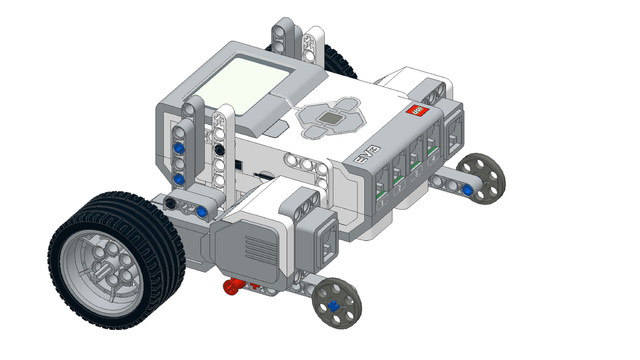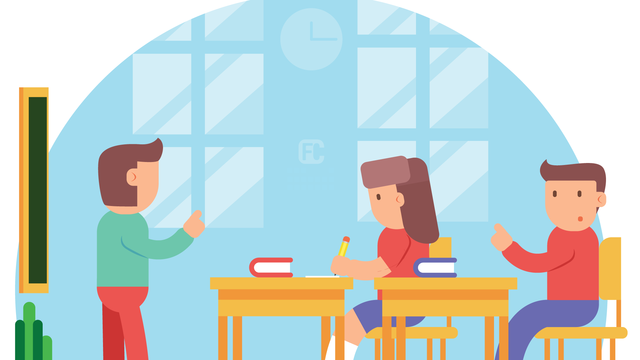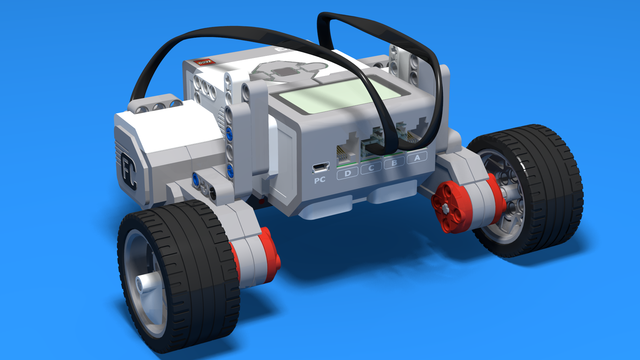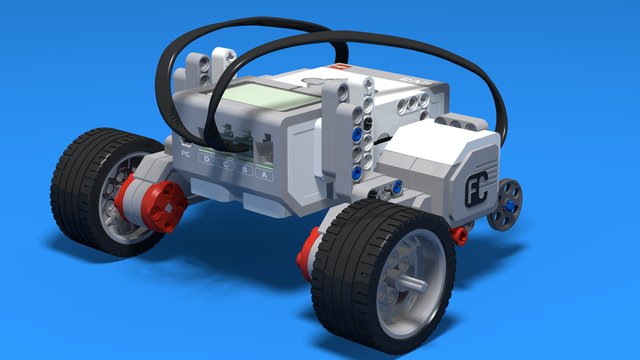How to help students implement long programs.
- #379
- 04 Feb 2017
- 1:55
One block at a time
Students will do better if the program is tested more often on smaller steps. A problem in a long program is hard to identify due to the early age of the students.
Instant feedback from the robot
The workflow must be like that:
Place a block and adjust it. Start the program. If the robot behaves as expected, move on and add a new block.
If the robot makes an error, you must change that last block you just added.
This way you and your students will always know where the problem is.
English
When students are developing programs with a series of instructions there are a couple of things you as a teacher, as an instructor should be very careful about.
In the Yo-yo challenge students would have to use 6 blocks I think.
And some of them might try to place all the blocks in the software and run it. And it won't work. What you should be careful in a group of students and this is something important to direct them, to try to encourage them, to be careful that they are doing it is for them to always place one block at a time - one or two. So, they place one or two blocks and they try. They place one or two blocks and they again try. They should not try to develop at this stage of the course and at their age. They should not try to develop the program with many blocks ahead. Just let them experiment and try to even push them to experiment. One block at a time. This is very important because they'll have some constant feedback from the robot. If, for example, they make forward, backward and then they make a mistake with backward again, if they do a constant run and tries and constant feedback from the robot they'll see where the error is. And they can fix it immediately. And it's much more difficult when you have many blocks in the program. So, always one or two blocks at a time.
Courses and lessons with this Tutorial
This Tutorial is used in the following courses and lessons

EV3 Phi. Introduction to robotics with LEGO Mindstorms
The things that you will be able to do with your EV3 robot by the end of this course are:
Freely move your robot towards desired target;
Avoid obstacles on the path of your robot using sensors;
Follow lines of any shape;
Detecting and picking up objects of any kind;
- 92
- 220:20
- 36

Series of instructions make a program
The challenge is to make the robot move back and forth with ever decreasing distance.
- 11
- 0
- 4
- 3d_rotation 0

Robotics with LEGO - Level 1.0 - Adventure in Space
The first level of the Robotics with LEGO curriculum for students in fifth to twelfth grades.
Various constructions with robots are built. Learn how to control the motors so that the robot navigates around the Moon and Earth in various ways. Getting to know the first two sensors. The robot can feel its surroundings with the help of the Touch sensor and avoid obstacles.
The Ultrasonic distance sensor can help the robot avoid obstacles. Students work with concepts like loop, degrees and medium motor. Robots can now do two different actions at the same time - while solving missions on a field, the third motor clears detected obstacles.
- 126
- 123:52
- 150

Lesson 1 - Moving like a Yo-Yo
Introduction
Today, you will get to know your classmates and your teacher, learn how the lessons are conducted, construct your first robot, and learn how to program it to move. The end goal of this lesson is to make the robot move like a Yo-Yo. How does a Yo-Yo move?

If you have ever owned a Yo-Yo, you know that it's meant to fall down and rise back up to your hand. But in order for it to move successfully, we need to move our arm in such a way that we provide it with the required velocity. Otherwise, it will decrease the distance on the way back up on each drop until it stops.
Try to make a good impression on the rest of your class, because you will be doing this course with them until the end.
- 19
- 4
- 9
- 3d_rotation 1

Level A1. Introduction. Robotics with LEGO
Introduction to robotics - The first level of the Robotics with LEGO curriculum for students in second, third or fourth grades. A journey in space, with robots. Various constructions with robots are built. Learn how to control the motors so that the robot navigates around the Sun, the Moon and Earth in various ways. Getting to know the first of the sensors. The robot can feel its surroundings with the help of the Touch sensor and avoid obstacles.
- 142
- 133:42
- 187

Lesson 2 - Yo-yo challenge
Introduction
Today we will learn to program the robot to perform more than just one action, as well as program it to move like a yo-yo. Have you ever played with a yo-yo? How does it move? Did you know that from Filipino yo-yo means "to return".

- 18
- 3
- 8
- 3d_rotation 1